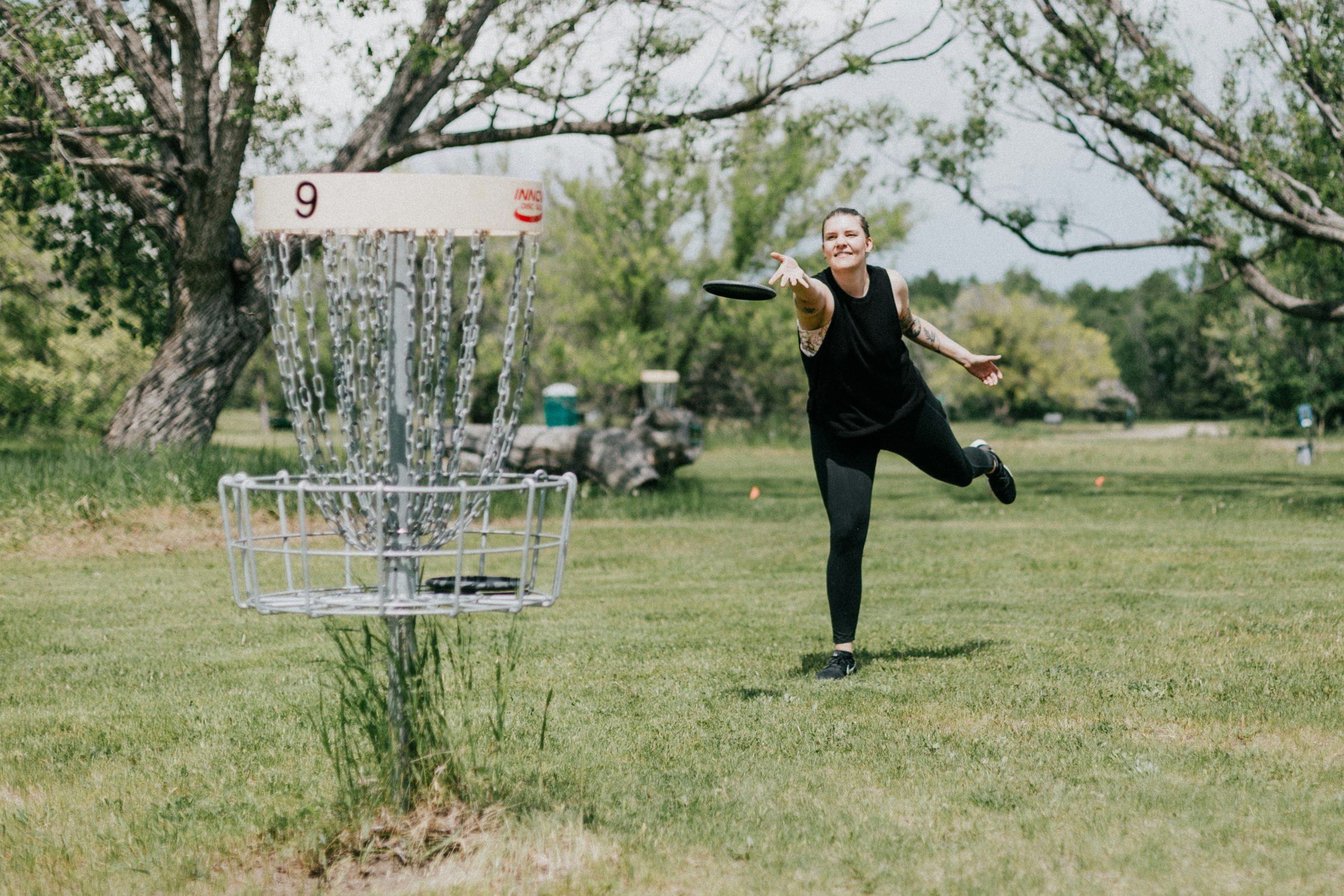Looking for a budget-friendly, social sport suitable for all ages and abilities? Try disc golf – the love child of ultimate frisbee and golf!
What is disc golf?
Disc golf is like golf, but instead of hitting balls into holes with metal clubs, you throw plastic discs similar to frisbees at targets (metal baskets mounted on poles or objects like trees or lamp posts). Your goal is to reach each target with your disc in as few throws as you can.
Disc golf courses are typically set up in parks and green spaces where there are natural obstacles (such as trees and ponds) to the discs’ flight paths. Each course has nine or 18 “holes” (just like in traditional golf) that each have a tee (a designated throwing area) and a target.
Why try disc golf?
- Low impact, high chill: Disc golf is easy on your joints and suitable for people of all ages, abilities and fitness levels.
- Cheap thrills: You can play for free on many courses, and discs are reasonably priced.
- Enjoy the great outdoors: You’ll get a healthy dose of vitamin D and fresh air.

4. Social connection: You can play with friends or make new ones at a local league or drop-in game and bond over missed throws and lost discs.
5. Become more resilient: Disc golf teaches you how to deal with challenges, setbacks (like when one of your discs lands in a pond), losses and high-pressure situations (like when your disc is about to accidentally hit someone). All this can help you become more resilient when faced with stressful life situations.
How to play disc golf
A round of disc golf starts with each player throwing one of their discs from the tee of the first hole in the order that all players’ names are listed on the scorecard (i.e., the player whose name is listed first gets to throw first). After each player throws their disc from the tee, they make each throw thereafter from wherever their disc lands. The player whose disc lands farthest away from the target gets to throw next. Each player keeps throwing until everyone has reached the target with their disc and therefore finished the hole.

To complete a hole with a basket target, the disc must land on the tray or the chains below the chain support. To finish a hole with an object target, the disc must hit the object’s marked target area (if there is one). After each player has completed a hole, everyone moves on to the next tee.
Throughout a disc golf match, each player records everyone’s scores (the total number of throws, including penalty throws) on their scorecard after each hole. A lower score is better because it means you reached the target in fewer throws. Scores on the previous hole determine the throwing order on the next hole. In other words, the player with the best (lowest) score on the previous hole gets to throw first from the tee of the next hole.
After playing all nine or 18 holes and completing the course, players add up their scores, and the player with the lowest score wins the match. Ready to give it a throw?
Let’s test your disc golf knowledge so far!
How to get started with disc golf
- Find a course: From big cities to small towns, there are many disc golf courses across the country. Check with your local recreation centre or parks department, search online course directories like the one on the Professional Disc Golf Association (PDGA)’s website or the UDisc app to find them. Can’t find one near you? Create a DIY course at a park using other objects like trees, lampposts, garbage bins or benches as targets.
- Learn the ropes: Visit PDGA’s website to learn more about disc golf and its official rules.

3. Keep it casual at first: Before you play competitively, play for fun and don’t keep score to boost your confidence and avoid throwing a fit.
The next time you’re looking for an affordable, accessible and active way to enjoy the great outdoors, head to your nearest disc golf course. Whether you get an ace (hole-in-one) or your disc ends up stuck in a tree, you’ll still have fun and make room to move!








